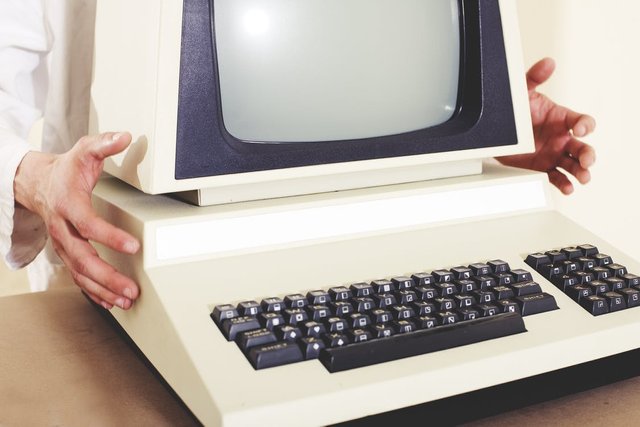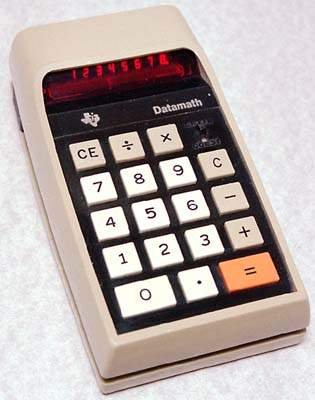Tech History: Technology in its Infancy by Guest Writer MW Hops

I don’t think it will ever appear in any Psych 101 textbook, but some people are most comfortable surrounded by familiar things. It could be the simplicity of listening to an old song or watching a favorite movie, but once we settle into that warm, fuzzy zone then our neurons begin hitting those endomorphic buttons like a frantic kid at an arcade.
Suddenly, the built up stress of the working day flows out like motor oil leaking from that cheap, second hand motorcycle bought last month. My comfort zone is not found in any Starbucks or pseudo French boutique.
If you remember that first Bond movie then recall Dr. No’s subterranean computer lab. That’s where my head’s at. Whenever I watch that iconic scene from No’s hall-like, futuristic room, my blood pressure lowers. Those mainframe processors, the size of your condo’s bedroom, may look like a joke, but to the dinosaurs of the 1960’s they were real! I can recite obsolete computer jargon like the Pope can regurgitate Latin blessings. Magnetic tape, punch cards, vacuum tubes, floppy discs, integrated circuits, input, output . . . don’t get me started.

I didn’t understand half of it, but I could say it like an exotic parrot in a Tarzan movie. Those computers were the early ‘cave-nerd’ steps that technology took when I was still collecting baseball cards in New York. Like the janitor at PS 132 used to say before he started mopping the cafeteria floor - you gotta start somewhere, kid!
We’ve come a long way since then. We’ve gained processing speed, made quantum leaps in storage capacity and the resolution of those satellite images can pick up the shape of a trash bag filled with glass bottles left behind by the homeless guy in the parking lot behind your apartment. We’ve lost a lot too. Computer technology has radiated our people skills and the fallout from being plugged in too long has left us feeling socially isolated.
More egregious than social erosion is the woeful status of our basic math skills. Sure, there will always be people with some kind of math block and for some people subtracting fractions is on par with grasping Einstein’s theories. Yet, for most of us reasonably intelligent folk out there, we have been too hasty in letting the computer do the foundation computations that were drilled into us way back when. Call me a dinosaur but I like the challenge of solving a simple equation.
We’re supposed to be Homo sapiens – the wise ones - but without enough stimuli our brains wither and we start seeing Alzheimer’s disease popping up in middle aged people.
I feel that losing math skills is like being unable to fix a broken household appliance or being unable (unwilling) to change a flat tire on our bicycle. We become detached from the real world, believing that we live in a perfect place that was promised to us in some graduate level course. I know they tell us now that those little lemmings in the arctic don’t really run off the cliffs like we once believed. So if that’s not true anymore than maybe this is – if our modern technology ever leaves us without internet service for more than 48 hours there will surely be a blind rush of desperate, lemming-like people leaping off condo balconies.

I don’t have the temerity to believe that this essay is going to change anything. My original purpose was to highlight a techno-relic from my youth. So I have chosen an archaic, but curious math tool called a slide rule. This bizarre, ruler-like calculator goes back in time so far that a stone cut version of a slide rule was dug out an Israeli cave in 1947! Just kidding, but maybe not!
Talking about a slide rule these days is about as relevant as having a conversation about the Dead Sea Scrolls! What is a slide rule, anyway? Well, a digital version of the slide rule is embedded in your calculator and does the computations whenever you start exchanging Russian rubles into Swaziland emalangeni. The challenge of a slide rule is to read a logarithmic scale.

Sounds difficult? It was! Mastering the slide rule was the academic equivalent of going through boot camp – a lot of kids were left behind in the dust, hitting the exits the moment the teacher started contrasting common logarithms with natural logarithms.
Worse than the challenge to the gray matter of the brain, was the social stigma of having a slide rule sticking out of that painfully heavy stack of books. That awkward thing was clearly the badge of a square (read nerd). Yeah, some kids could do the balancing act and walk a tightrope between the round world and the square world, but I couldn’t! Working with a slide rule during study hall was like standing on a lunchroom table reciting passages from Macbeth!
Fortunately, slide rules didn’t last very long. To the rescue came a team of engineers from Cal Tech University in Pasadena, California. Circa 1967, a proto, handheld calculator was given its first patent. Slide rules soon took their rightful place along with hoop skirts and buggy whips. That first line of handheld, electronic calculators to hit the American market looked very lame from a modern point of view. They were boxy, limited and very, very expensive.

The Texas Instruments ‘Cal-Tech’ model would go unnoticed in Dr. No’s secret liar of spinning tapes and flashing lights. If it were to suddenly appear at your workstation one morning, you would most likely throw it in the bin then write a memo about excessive practical joking amongst members of the staff.
The most ridiculous feature about that Cal-Tech, stone axe was that there was no ‘liquid crystal display’ that we have become so used to in our little pocket calculator. Huh? The first models still had one foot firmly planted in the ‘60’s and LCD display was still a couple years down the line.
The original device handled inputs up to six digits in size and give answers up to 12 digits, but didn’t have the familiar screen to show us what happened. This dinosaur spit out a hard copy, paper strip from a ‘thermal printer’ sort of like the old ticker tape that New Yorkers threw into the air whenever a visiting army general cruised down Broadway in an open Cadillac. Improvements quickly kicked in to make significant changes in the pocket calculator of the 1970’s. Numerous math functions were added along with a memory and, wait for it, the price came down drastically. An added bonus was thrown in for good measure.

A period of healthy competition between Japan and America lasted for the rest of the decade. I love a story with a happy ending!
Peace out,
MW Hops
This is a fantastic glimpse into technology of the past written by an author whom I deeply admire. Its a real treasure to find such a candid and sincere survey of humanity's nostalgic yet still familiarly technological past. I'd like to thank MW Hops for contributing this essay to @technews
If you enjoyed this article please leave your thoughts and feedback below.
Thanks for reading!
Source:
Technology in It's Infancy - MW Hops